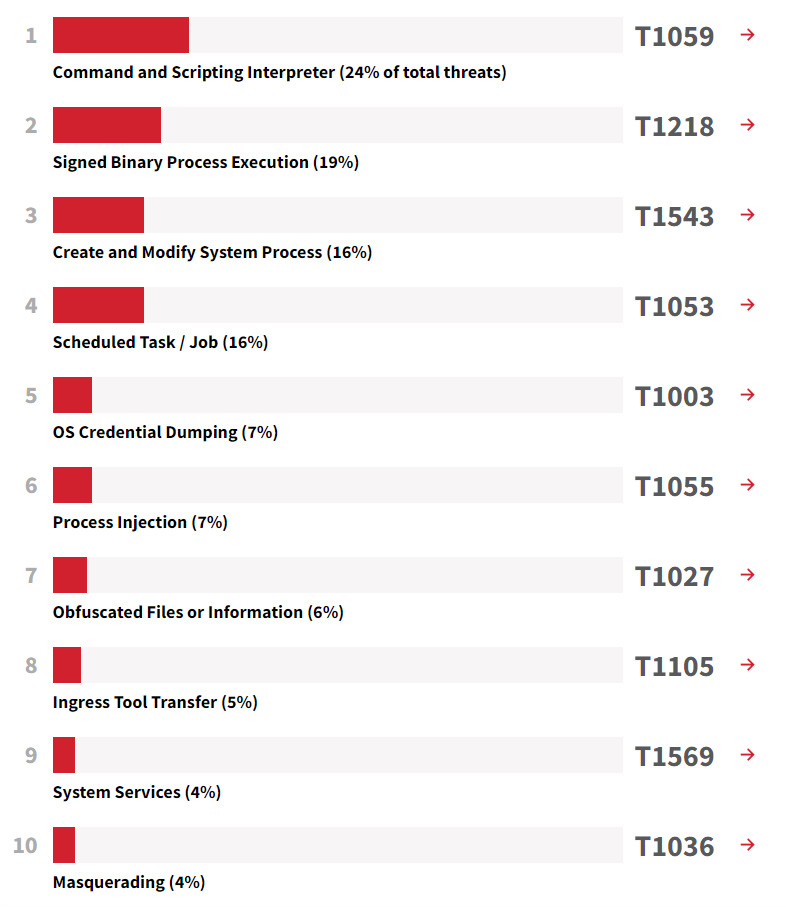Understanding the main benefits of memory forensics
Naturally, for the reader who picks up this book, the benefits are obvious. Since you have decided to deepen your knowledge of memory forensics, you probably have your own reasons for doing so. However, let's take another look at the most common situations in which Random Access Memory (RAM) investigation can play a crucial role (not only in digital forensics but also incident response and malware analysis), and perhaps you will discover new use cases for the knowledge and skills you have acquired.
No trace is left behind
The number of threat actors using living off the land and fileless attack techniques has increased dramatically over the past few years. Attackers no longer care as much about removing their footprints, instead, they try to leave as few of them as possible to avoid detection. This makes the job of information security professionals much more difficult because the use of built-in tools and the lack of malicious files on the disk that can be scanned means that some traditional security solutions may be useless. A lack of logging may make it very hard to reconstruct how threat actors abused built-in dual-use tools, for example, various command and scripting interpreters, in the course of a post-mortem examination, so acquiring and analyzing memory may play a key role in such cases.
Let's discuss each case separately.
Find me in memory
Let's start with malware that works exclusively in memory. The concept itself is not new. When talking about the beginning of the era of memory-resident malware, some researchers refer to Maltese Amoeba, a virus first discovered back in 1991 in Ireland. Others prefer to start with the Code Red worm that appeared in 2001. In any case, since the beginning of the twenty-first century, fileless attacks have only gained momentum and are becoming more and more popular. For example, a payload may be injected directly into memory via PowerShell, and it is becoming extremely common. The process injection technique itself was included in the top 10 MITRE ATT&CK® techniques of 2020 by many cybersecurity vendors. For example, here are the top 10 techniques from the Red Canary 2021 Threat Detection Report via https://redcanary.com/threat-detection-report/techniques/:

Figure 1.1 – Top 10 MITRE ATT&CK techniques of 2020
Process hollowing, dynamic-link library injection, process doppelgänging, and other process injection sub-techniques are used not only by sophisticated state-sponsored threat groups but even by commodity malware operators.
Frame of work
The other side of the issue is the use of numerous post-exploitation frameworks, such as Metasploit, Cobalt Strike, or PowerShell Empire. Such instrumentation provides attackers with a wide range of options to generate a variety of malicious payloads and inject them into memory.
Created with offensive security in mind, these frameworks allowed first penetration testers and red teamers, and then various threat actors to use a wide range of techniques with very limited footprints on disk, even if they didn't have outstanding malware development experience. For example, Cobalt Strike's Beacon payload's unmanaged PowerShell features allowed threat actors to run it without actually running powershell.exe, abusing the Windows API instead.
Such frameworks as Cobalt Strike have become so common that some threat actors even use them instead of custom malware. For example, the notorious Evil Corp group, whose members are believed to be behind high-profile ransomware attacks, including Garmin, switched the Dridex bot to Cobalt Strike's Beacon in their WastedLocker campaigns.
Living off the land
Living off the land is a very popular approach in which attackers use built-in tools and installed legitimate software for their own purposes. Most tools for example, PowerShell or WMI, are used by system administrators to perform their daily tasks, making it difficult not only to detect attackers but also to block the tools they use.
Attackers can utilize living-off-the-land techniques with a variety of tactics. PowerShell can be used for downloading the initial payload from the attacker-controlled server, binaries such as rundll32.exe and regsvr32.exe can be used for execution and defense evasion, Ntdsutil can be leveraged for credentials access, and PsExec and WMIC can be abused for remote execution. There are lots of similar examples, and if the IT infrastructure doesn't have advanced logging capabilities, an analyst's chances of extracting such information may be very low. If acquired in time, memory analysis may be of great help!
Another important note is that in many cases, you can find only the first stage of the malicious binary on the disk – the next stage (and potentially even the next!) is loaded from the server directly into memory, so you won't see it during post-mortem analysis if you don't have a memory image.
What's more, most malicious binaries are packed, encoded, and encrypted nowadays in order to avoid detection, but not in memory! So you can use tools such as PE-sieve to collect potentially malicious code for further analysis. Of course, we'll show you how to do it in the following chapters.
Privacy keeper
In recent years, the issue of privacy has become more acute. Tons of personal data, photos, and messages appear online every day. Service providers collect information about our personalities, interests, and routines to make their work more efficient and more useful. Instant messengers, browsers with privacy modes, in-memory file systems, password managers, and crypto containers are emerging as a result.
Of course, privacy is everyone's concern, but it is most relevant to cybercriminals, as they really have something to hide. We have seen more than once situations where files of interest found on a suspect's computer have been encrypted or saved in a crypto container. In such situations, memory collection and analysis is the key to all doors, as it allows investigators to retrieve the passwords and keys needed for decryption.
As you can see, there are different cases but they all have one thing in common, which is that in each of them, memory forensics can play an extremely important role.



